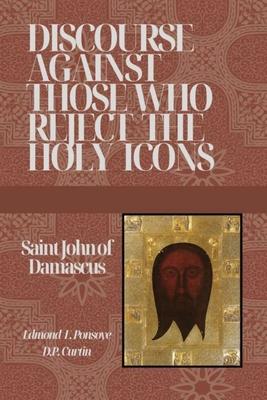St. John of Damascus lived in a world that was doubly hostile to religious images, both from the Iconoclasts of the Eastern Empire and from the Islamic Caliphate, which had been staunchly opposed to religious imagery since the 690's. The question of the icons in churches remained a point of public debate that was left as an open question. However, within eastern Christendom the argue for their use was prevailing. Moreover, the use of icons was being tied instrumentally to the personhood of Christ and physical manifestation of the Godhead. Thus, according to St. John Damascus, those who refuse to venerate an Icon also refuse to worship God's Son, Who is the living image and unchanging reflection of the Father in Trinitarian theology.

Book
Discourse Against those who reject the Holy Icons
(Write a Review)
Paperback
$8.99
St. John of Damascus lived in a world that was doubly hostile to religious images, both from the Iconoclasts of the Eastern Empire and from the Islamic Caliphate, which had been staunchly opposed to religious imagery since the 690's. The question of the icons in churches remained a point of public debate that was left as an open question. However, within eastern Christendom the argue for their use was prevailing. Moreover, the use of icons was being tied instrumentally to the personhood of Christ and physical manifestation of the Godhead. Thus, according to St. John Damascus, those who refuse to venerate an Icon also refuse to worship God's Son, Who is the living image and unchanging reflection of the Father in Trinitarian theology.
Paperback
$8.99